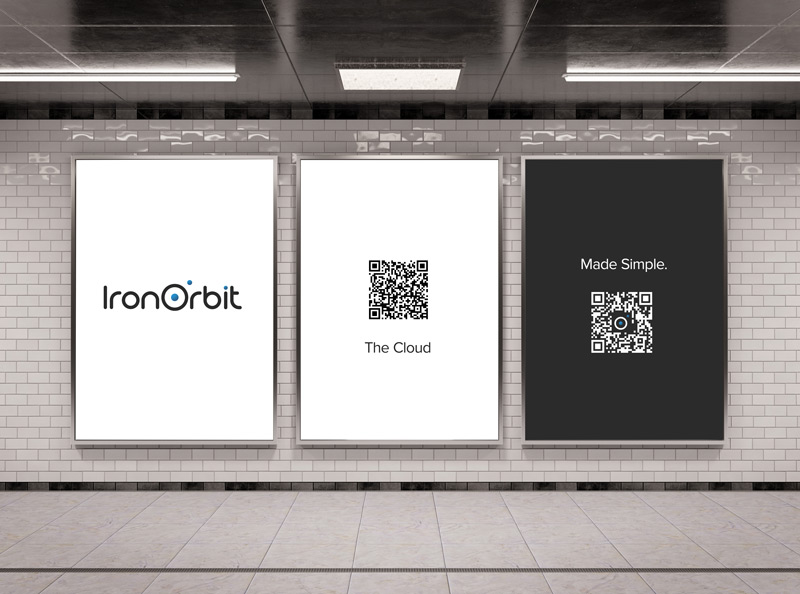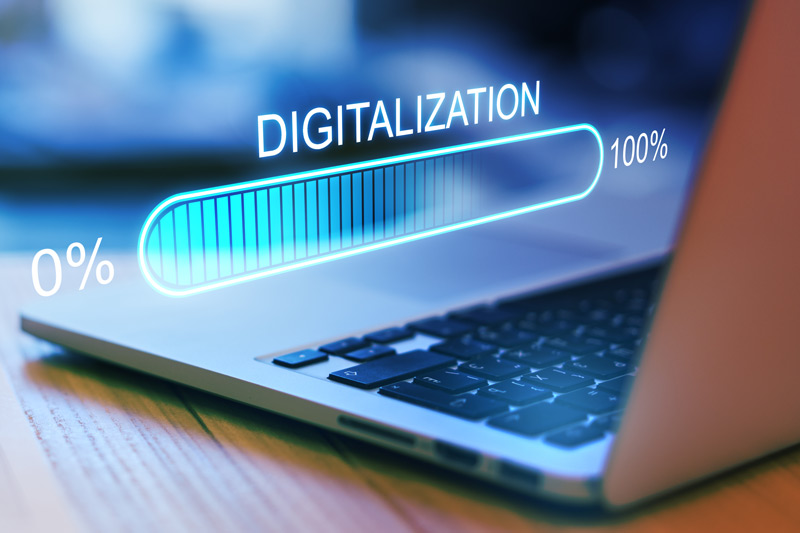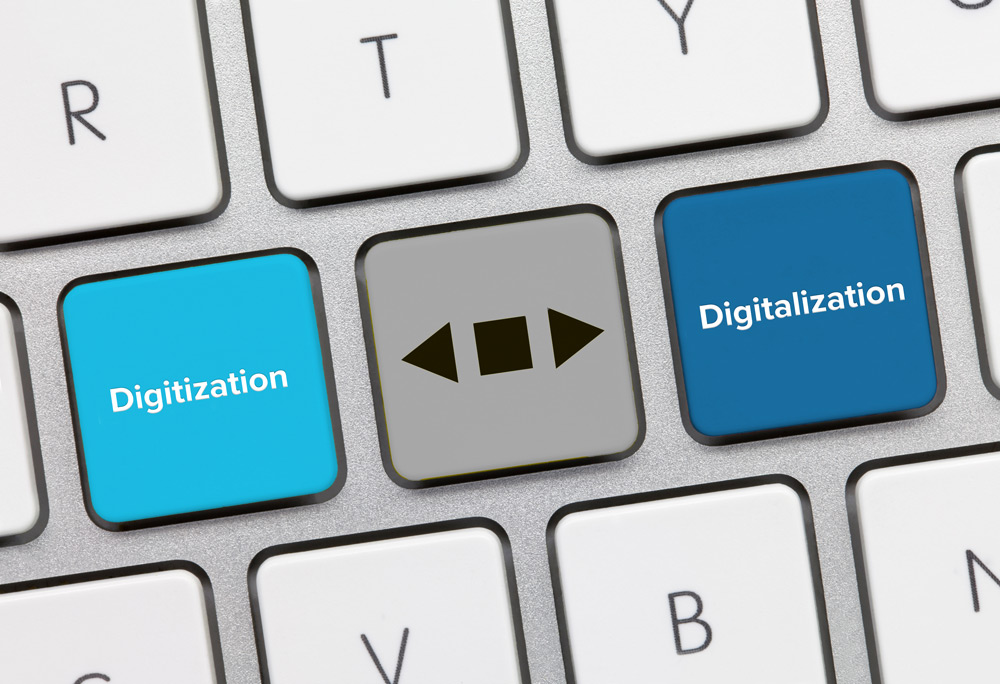Don’t Confuse Digitization with Digitalization.
The terms digitization and digitalization are often mistaken for one another. They mean different things, and it’s important not to confuse them.
Digitization is not digital transformation.
Why is it Important to Know the Difference?
Understanding what the two words mean is not just about semantics. To confuse the two sets up unreasonable expectations and shortchanges the importance of digital transformation. Bewilderment could put your company in jeopardy. You think you’re accomplishing one thing when you’re doing something else. These two things have to go in sequence. To skip steps or jump ahead for expediency creates problems down the road.
Digital Technologies Are Raising the Bar Every Day
Let’s begin with the fundamental building block known as digitization. Digitizing is a primary building block. You must digitize operations if you’re going to remain competitive. But keep in mind that digitizing is only half the story.
What is Digitization?

Digitization, or digitizing, is the conversion of analog to digital technology. Digitization improves what we’ve always done in companies. Digitization minimizes using paper because you’re no longer using paper and pen. You’re inputting data into a desktop or mobile device using keyboard strokes. Sometimes, you’re simply scanning a bar code or QR Code (QR codes store far more information and responsiveness is ten times faster than bar codes).
Digitizing existing processes has the following benefits:
- Better Customer Experience
- Increased Mobility
- Lower Operational Costs
- Faster Processes
- Improved Decision Making
- Secure & Accessible-Anywhere Information
- Increased Productivity
Once you replace analog with digital processes, you’ll notice significant reductions in print volume and costs. Digital files transfer quickly, update instantly, and are much easier to track. A standard KPI of digitizing would be a cost-cutting metric. Using digital technologies and digitizing data improves productivity and can create new revenue streams.
Enhanced Productivity & Outcomes
A digitized company has the distinct advantage of having faster, more agile, and more scalable workflows. Adopting new tools happens more quickly and efficiently than with legacy systems. The entire information infrastructure becomes connected to quarterly goals and business outcome targets. Digitizing offers significant operational improvements such as boosting efficiencies and enhancements with customer experience. Plus, digitizing opens the door to innovations impossible in an analog environment.
What is Digitalization?

Digitalization indicates a company is in the process of moving to the second half of the story. You know you’re a digital company when you begin delivering new customer value propositions that are digitally delivered. That is becoming digital.
Gartner defines digitalization as going beyond digitization. Its use of digital tech changes a business model and provides new revenue and other value-producing opportunities.
Brand New Value Propositions
What problem can you solve for your customers that you never considered part of your mandate? Move beyond traditional products and services to solve your customer’s problems.
Digitalization involves a paradigm shift in the culture and changes the business model. That is why digitalization could lead to a complete digital transformation of your business. The journey involves creating strategies that leverage digital capabilities to innovate new value propositions.
Digitization vs. Digitalization
Digitization involves a one-time implementation. On the other hand, digitalization demands developing new processes and strategies over time. The best-case scenarios would be accumulative, with a tiny success building upon another.
Digitization is about operational excellence. As an improvement of existing processes, you do the same things you’ve always done, only better.
Digitalization is about rapid business innovation to deliver new customer value propositions.
The Importance of Using the Right Technology
Because not everyone in your company is tech-friendly, investing in technology that is easy to use and accessible is crucial. Everyone from C-level executives to managers and frontline employees must work together to drive digital innovation and business outcomes. Companies that make digital tools accessible throughout their organization achieve higher proficiency levels. With these gains in place, it’s easier to reimagine every aspect of business operations.
![(Digitilization2)AdobeStock_162263525-[Converted] - IronOrbit](png/digitilization2adobestock_162263525-converted.png)
More About People Than About Technology
While digitalization is still mainly about using digital technology, the processes and strategies that arise require new skills and the adoption of new ways of doing business. Realizing the full benefits of digitalization means investing in new skills training and developing process agility. Transformational benefits arise from creating a company culture that inspires widespread frequent experimentation.
Most business leaders still rely on outdated organizational structures to implement strategies. They are unaware of how structure inhibits agility. Business strategy must, at all times, be fluid. People, processes, data, and technology synchronize continuously to identify and deliver innovative customer solutions. Another handicap of traditionally structured corporations is that it is too slow.
The journey requires organizational changes that are customer-centric. The journey leverages technology and needs leadership support. Digitalization empowers and enables employees and customers by leveraging technology and opening all company levels to experimentation and exploration. That’s why the IT Director needs to be a part of the business planning discussions.
Digital Business Design
People refer to the business design as business architecture. Most people think of architecture as the purview of the IT department. If you have a business architecture function, it’s usually part of your IT division. By contrast, digital business design is the responsibility of senior executives and IT leaders.
Ultimately, all businesses must become digital to thrive in a digital economy. The ones that will be most successful at this will be those that design themselves for it. Digital design, not strategy, will separate the winners from the losers.
Just to Recap
Digitization converts information from a physical format to digital. Digitizing is a prerequisite building block of digitalization. Digitalization is the more advanced stage that can lead to digital transformation. Digital transformation is about futureproofing and resiliency.
CONCLUSION
Modernizing operations means digitizing as a fundamental first step. Digitizing can lead to digitalization. A company can implement a series of digitalization projects like automating processes, developing employee skills, and innovating new ways to leverage digital technology, but digital transformation is more than implementing various projects.
Digital transformation is a long slow journey that requires company-wide involvement and participation. Few companies are designed for digital. Becoming a digital company is a challenge. The path to successful transformation is not straight nor easy to navigate. Much effort goes into deliberately synchronizing people, processes, and technology.
For a deeper dive into digital transformation, please look at part one of our blog, Why Digital Transformation is Important to Sustained Success.
Digitization can lead to digitalization which can lead to digital transformation. Only companies going through the process of digitalization can choose to become digital. While digitizing and digitalization are about leveraging technology, digital transformation is a revolution that changes the design of the business. While none of these are sufficient to guarantee the next level, any step forward is an investment in your company’s future well-being.
The transformational aspect empowers entire organizations and delivers new service levels to your clients.
IronOrbit enables organizations to modernize their information infrastructure, link workflows, and scale productivity. More than a technology service provider, IronOrbit can help you understand where your infrastructure is today and where you want it to be tomorrow.
Focus on targeted objectives and tap into the power of cloud-based transformations.
Wherever you are on your digital transformation journey, IronOrbit can help. The most important thing you can do for your company is to take the initiative to advance the infrastructure of your business. What change could you make today to help streamline operations and become more resilient?
Sometimes it helps to have a knowledgeable sounding board on your side. Whether your business still has an on-premises server or has already moved to the cloud, we can help you identify valuable opportunities for future innovation and growth.


